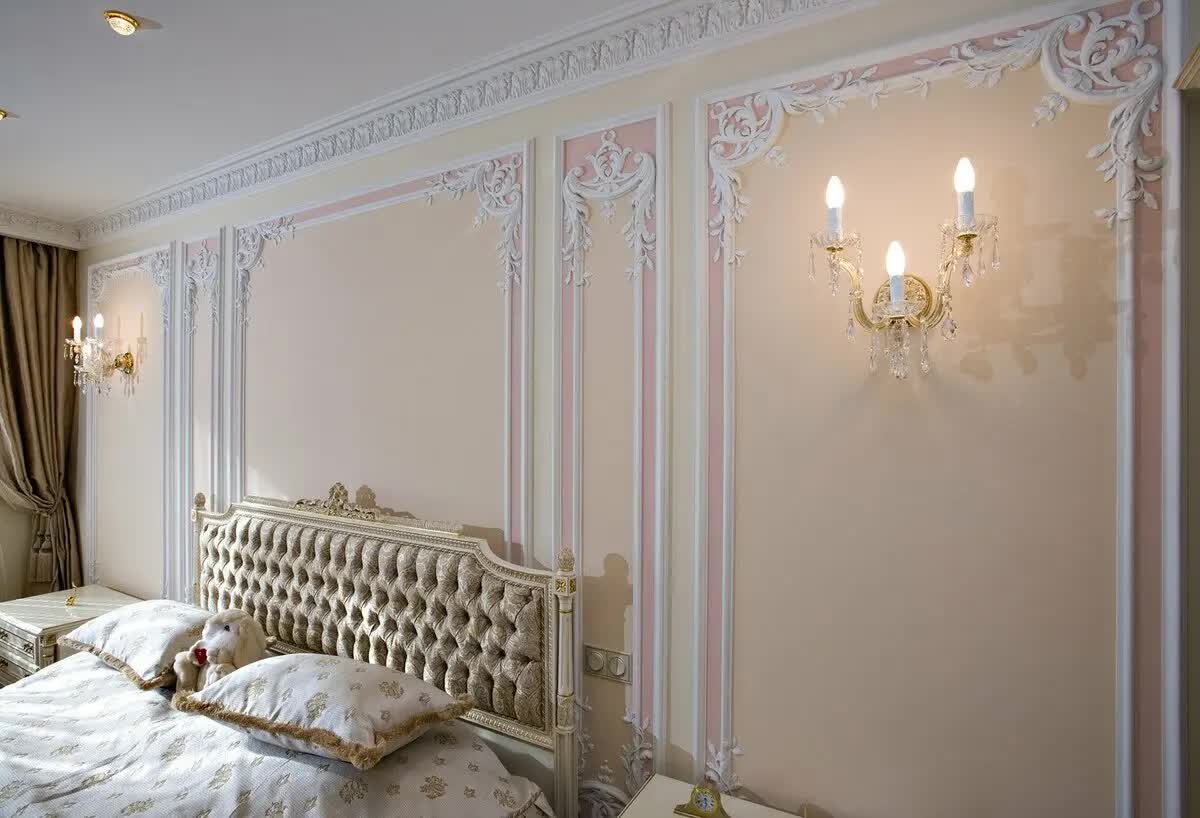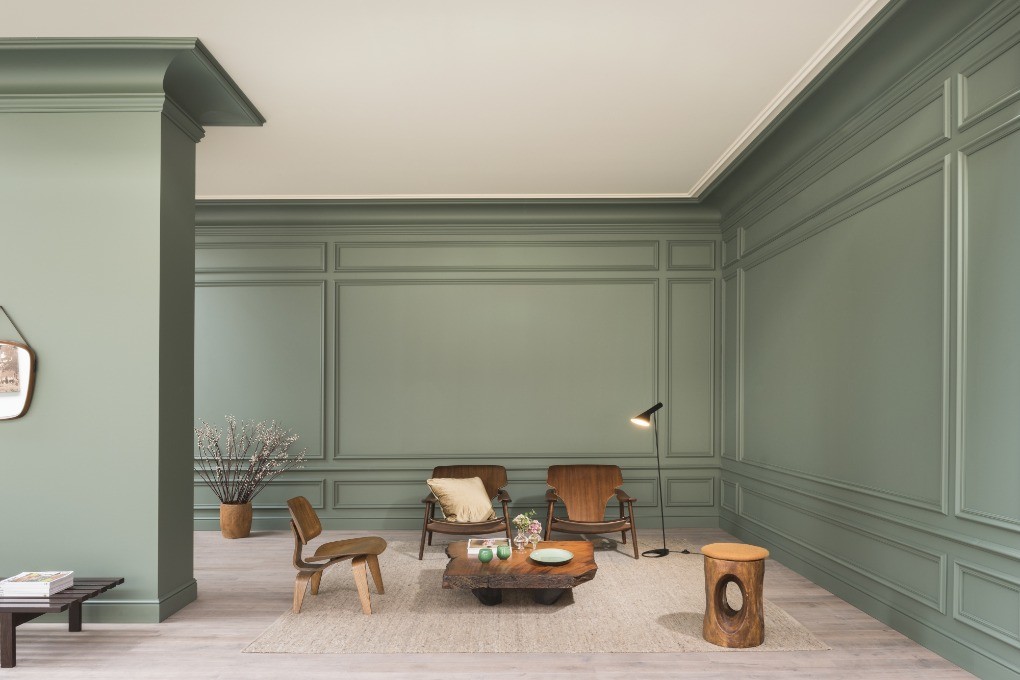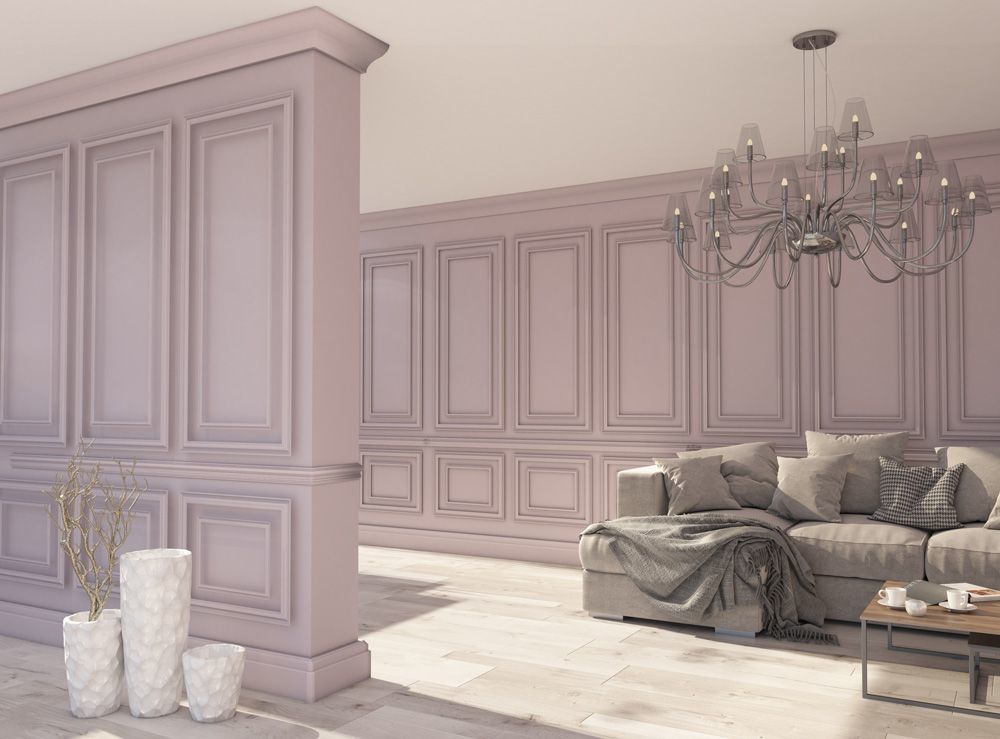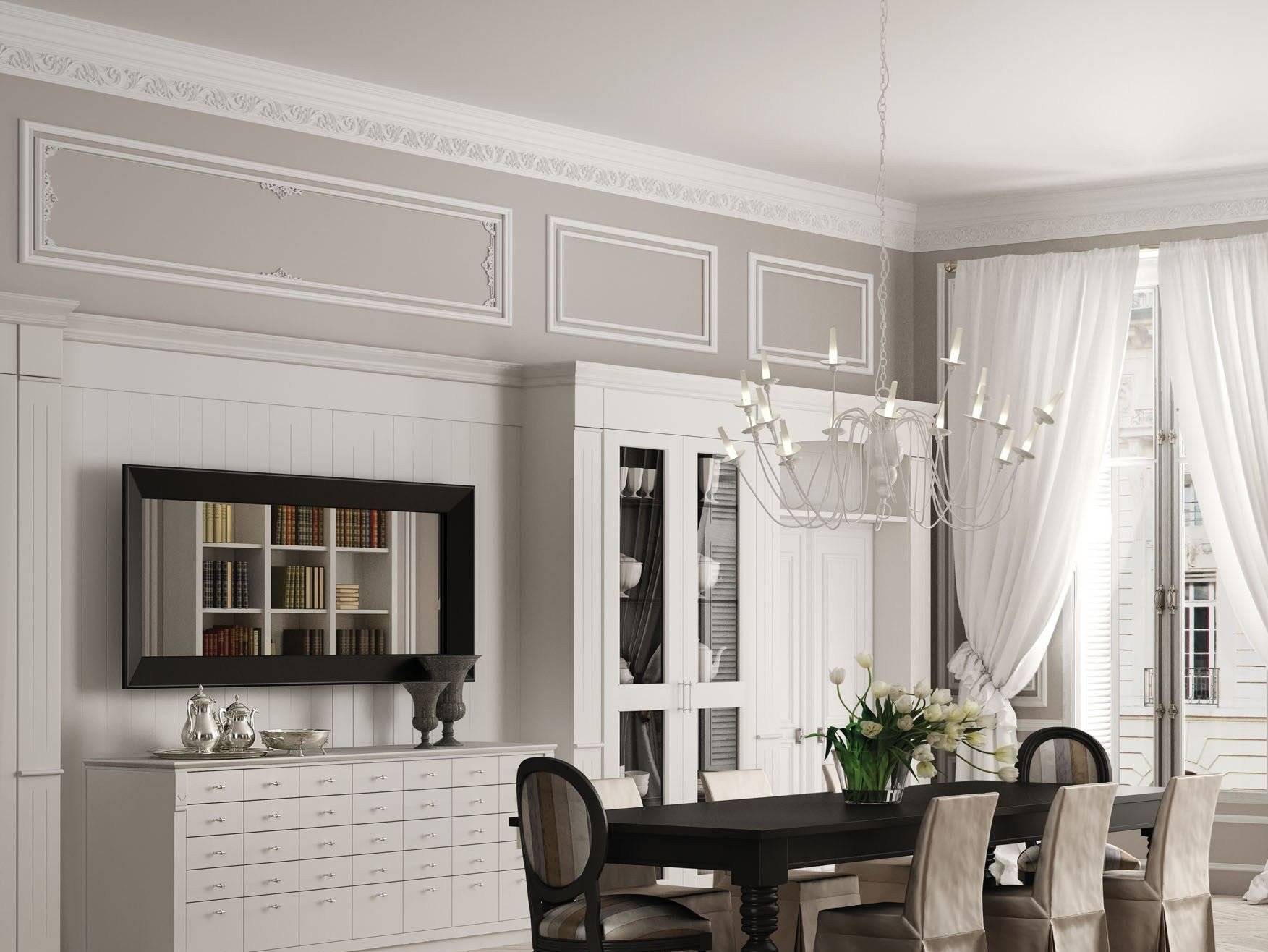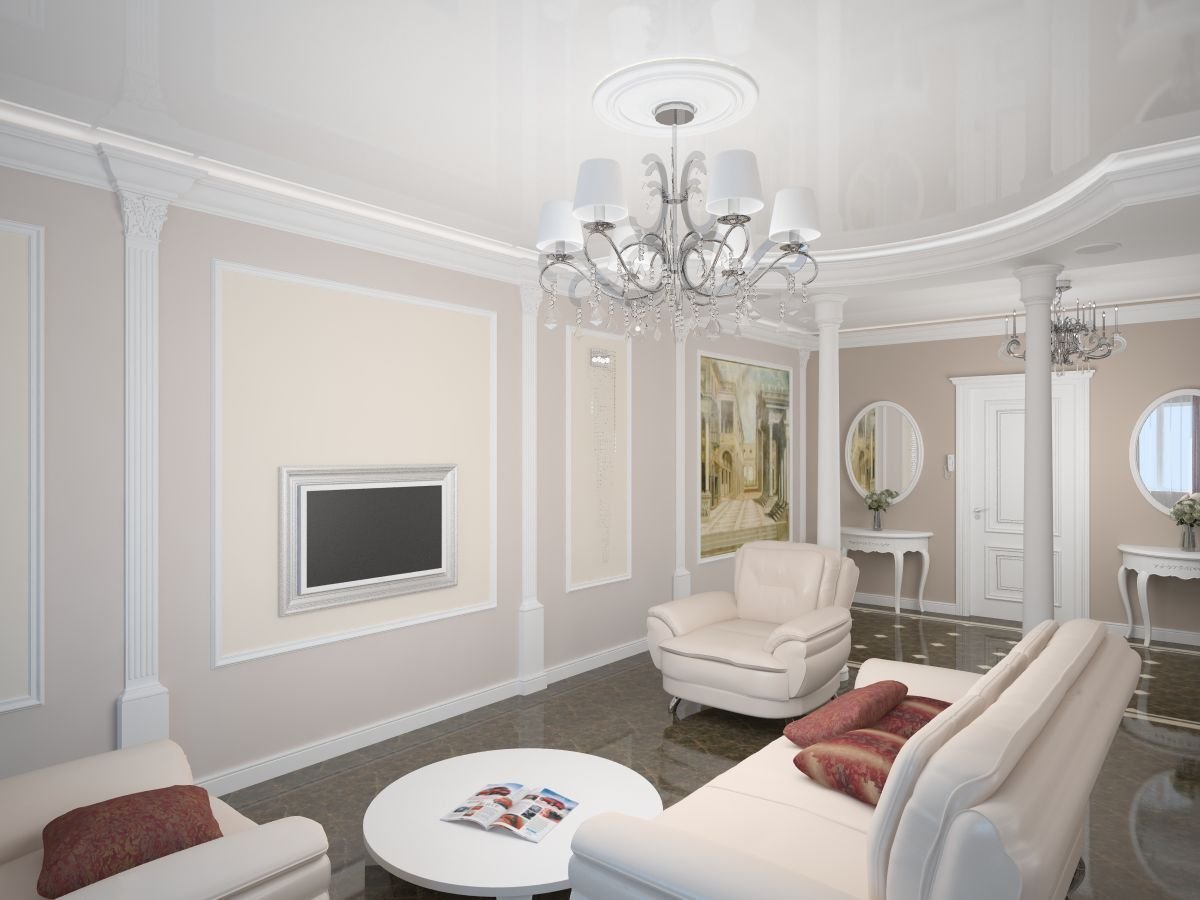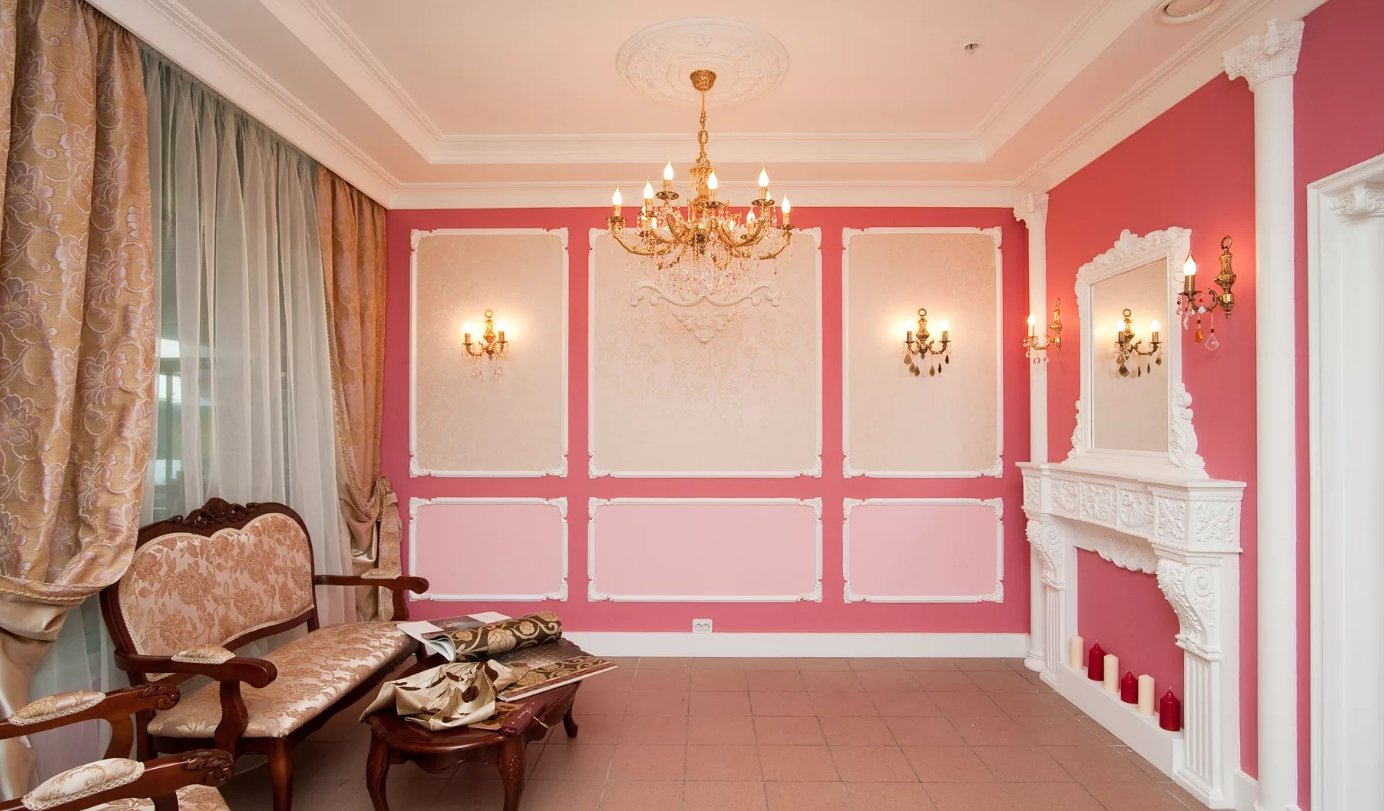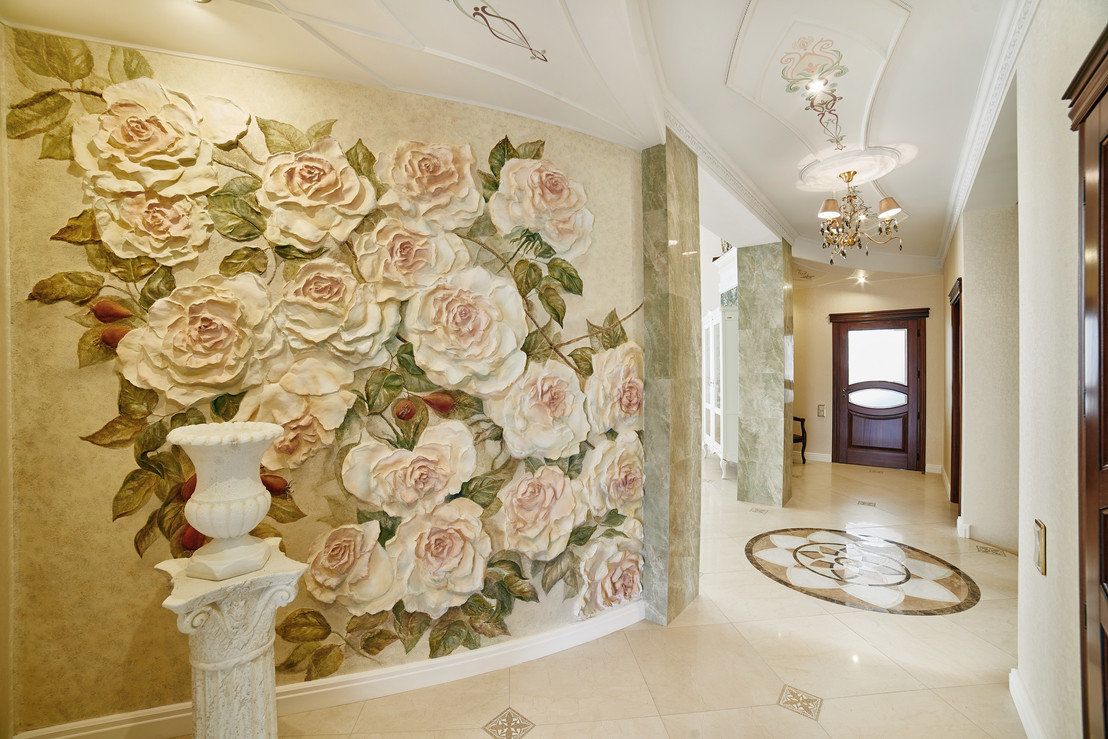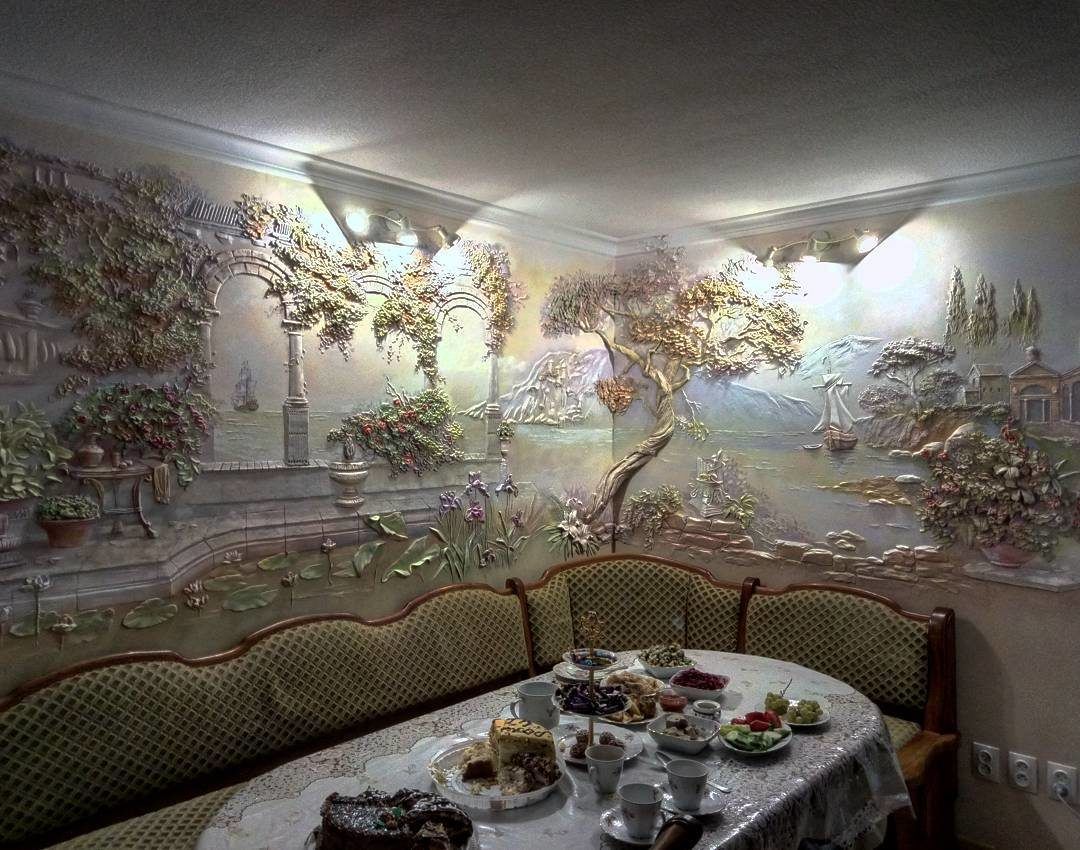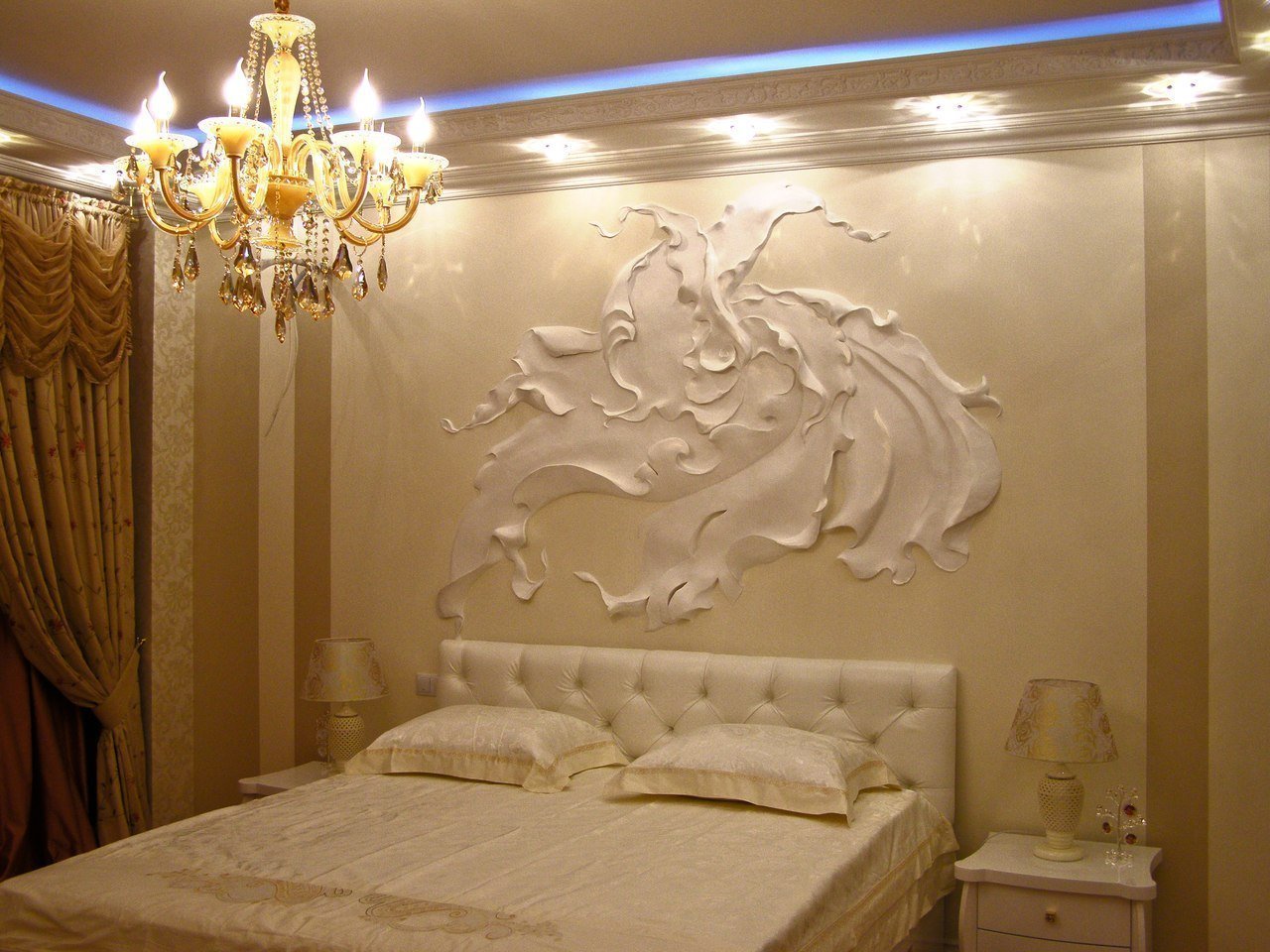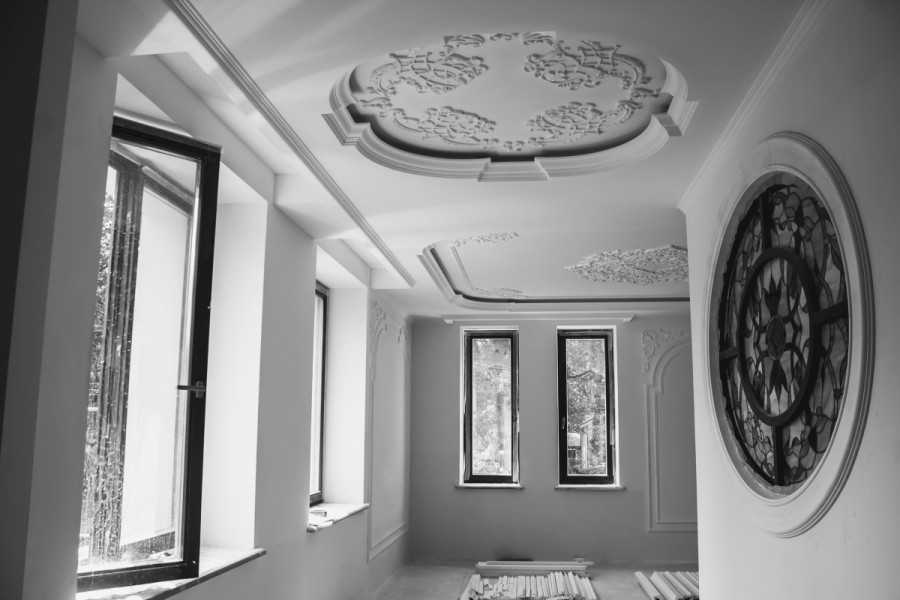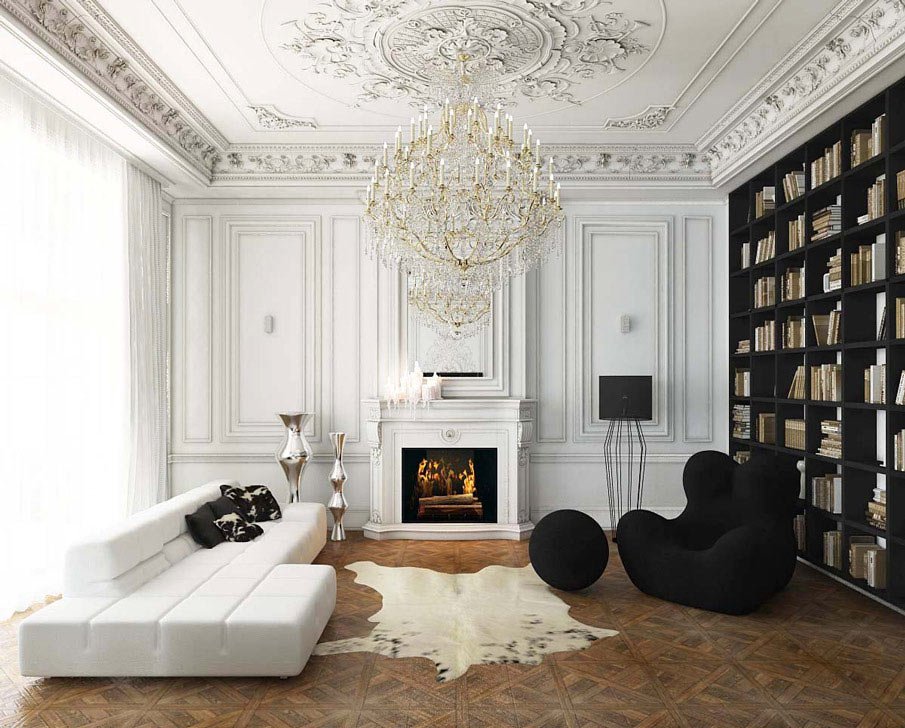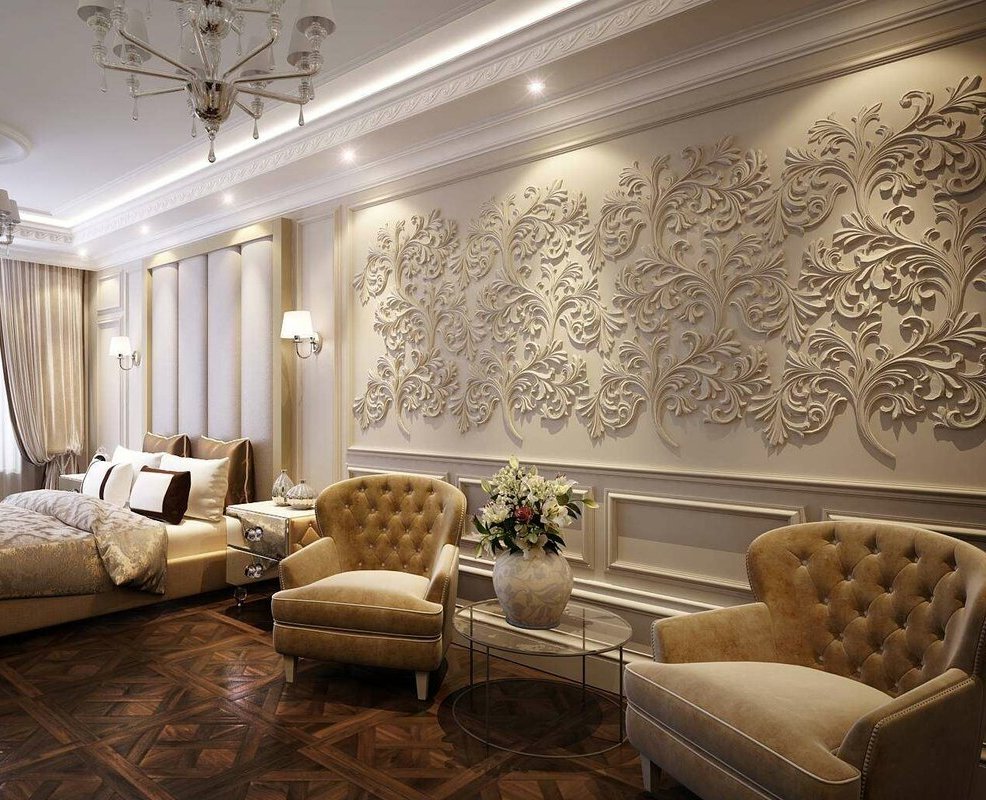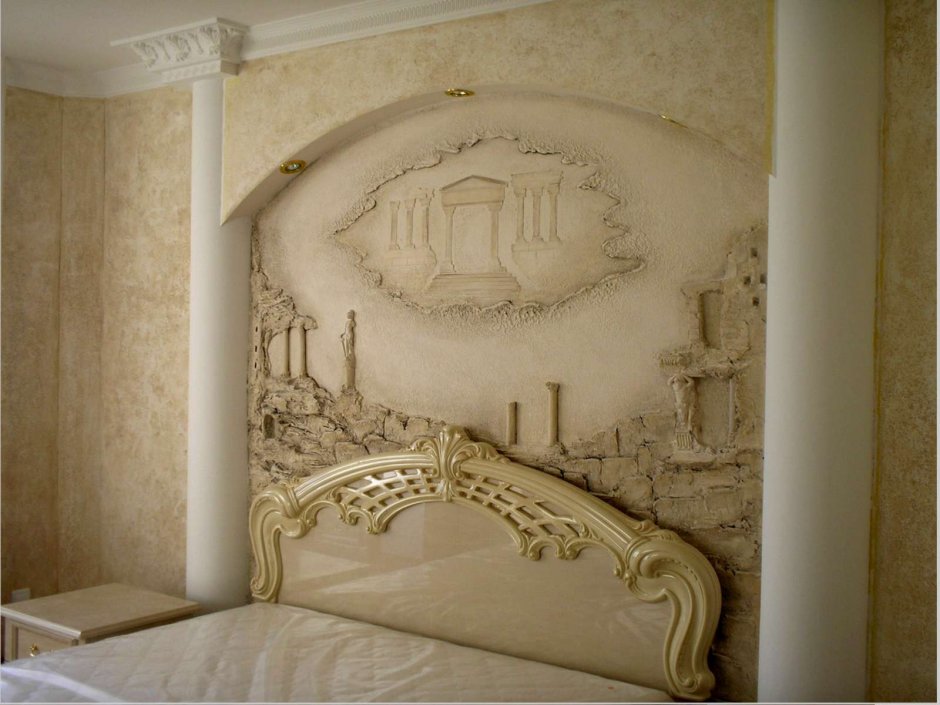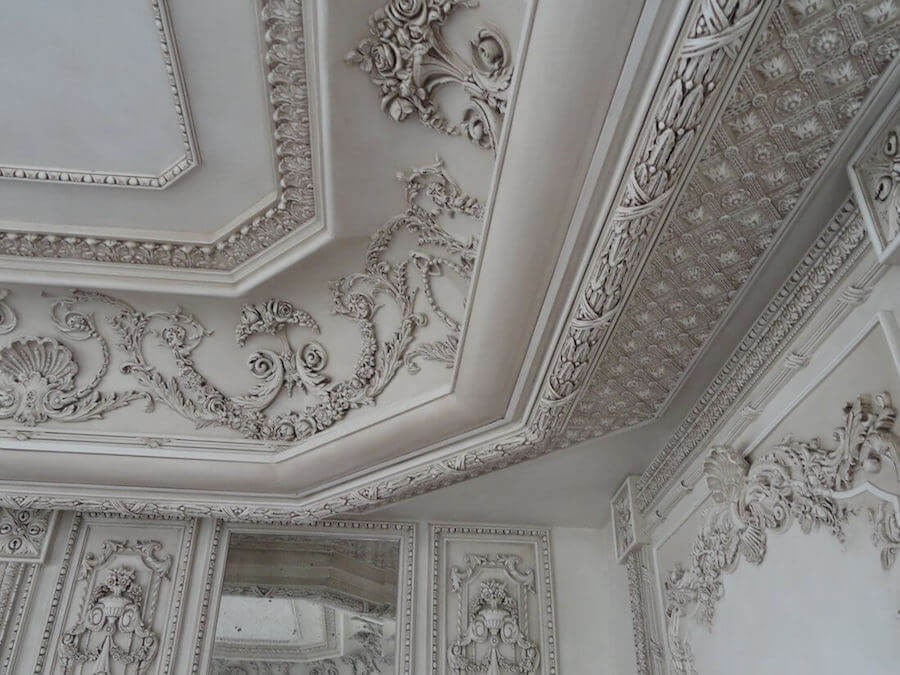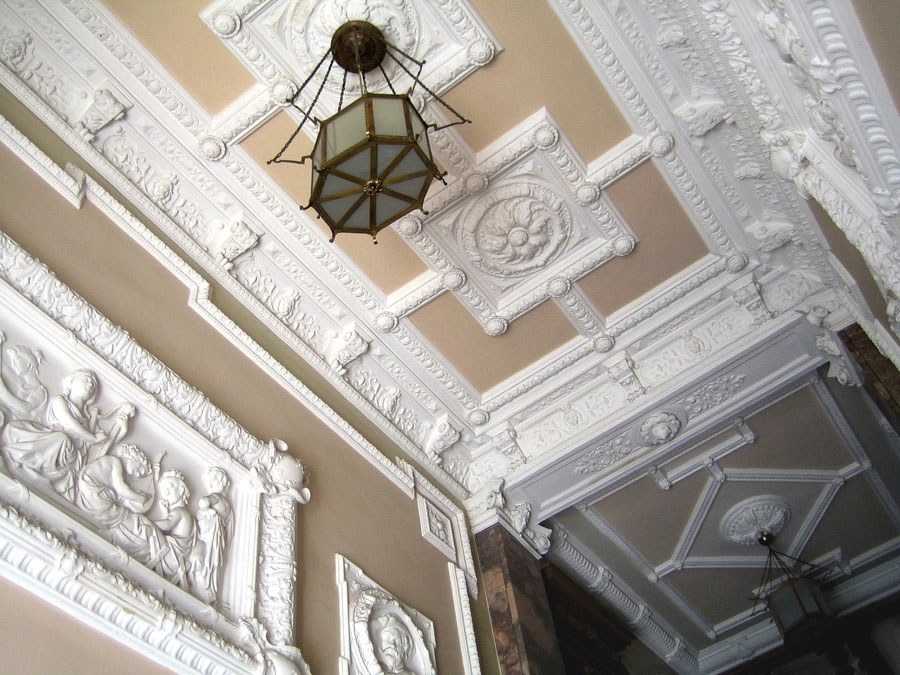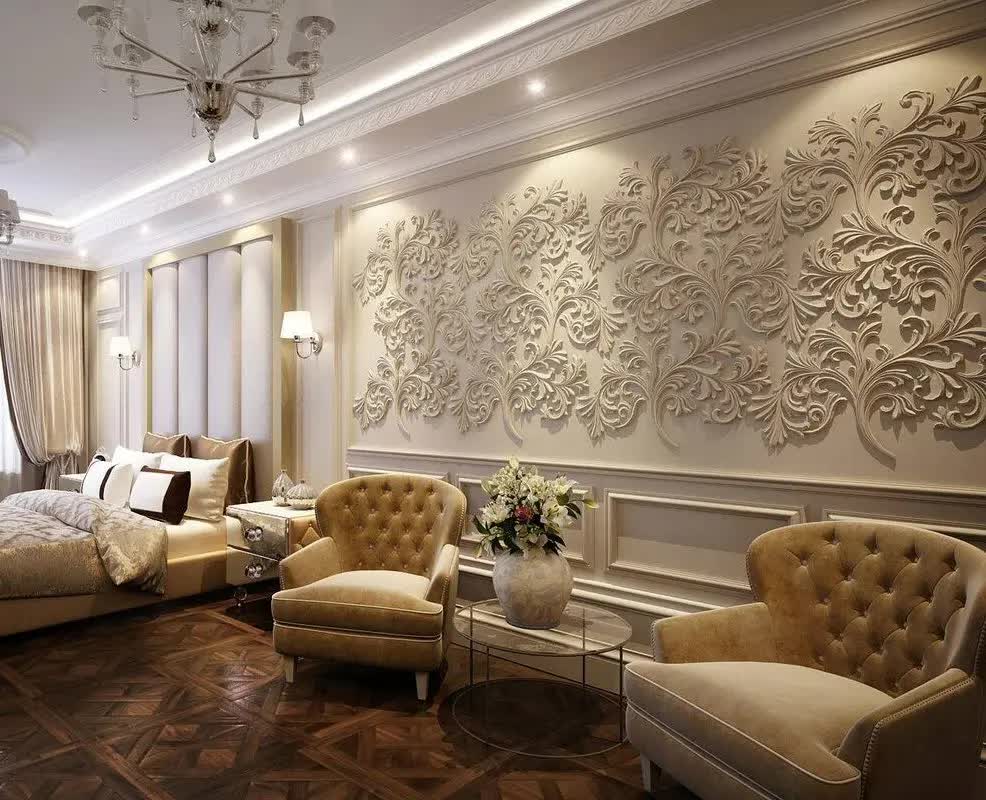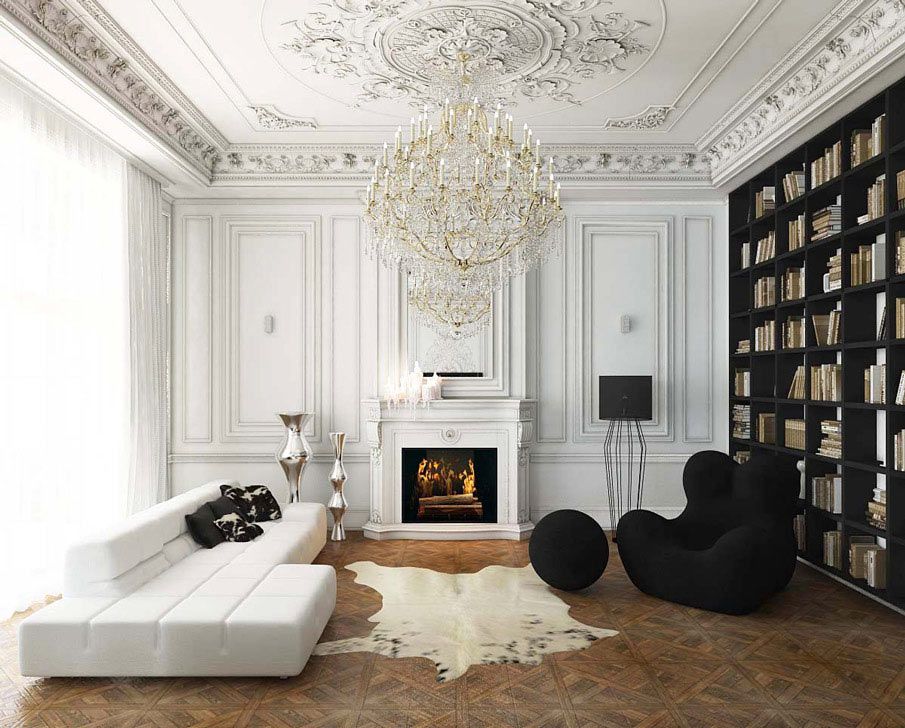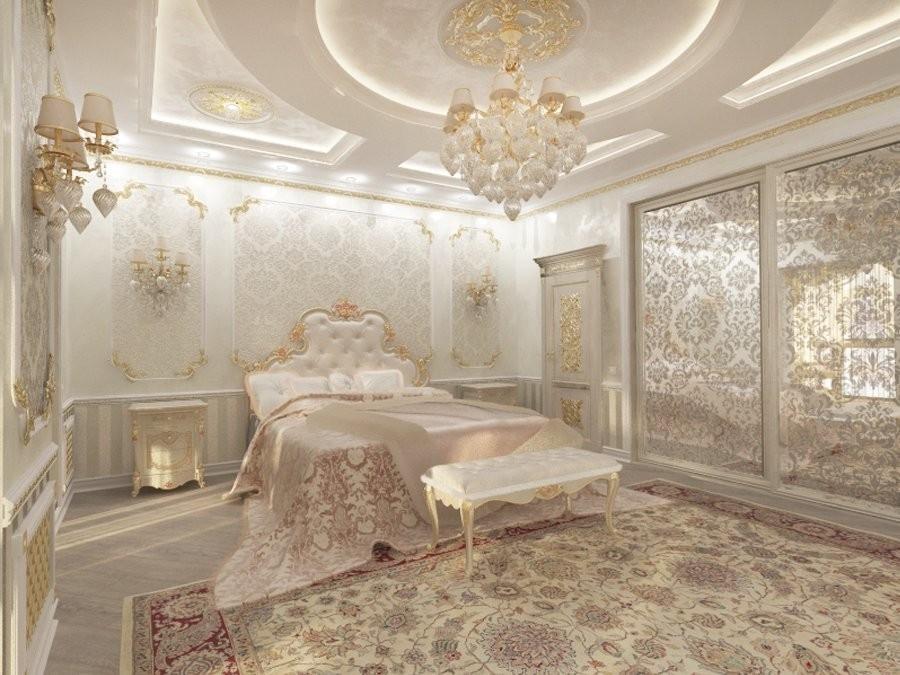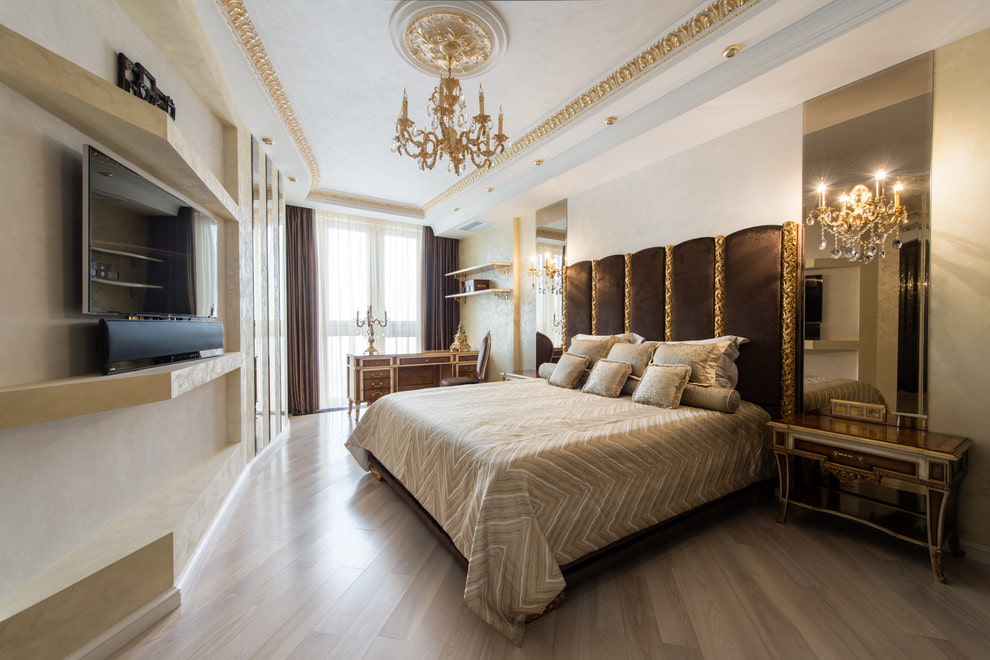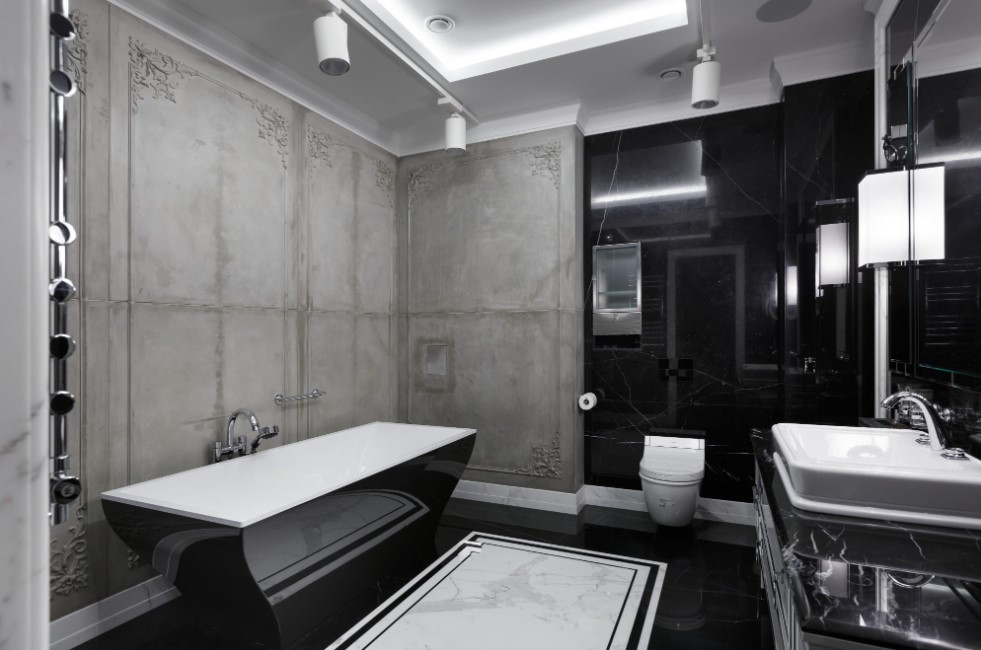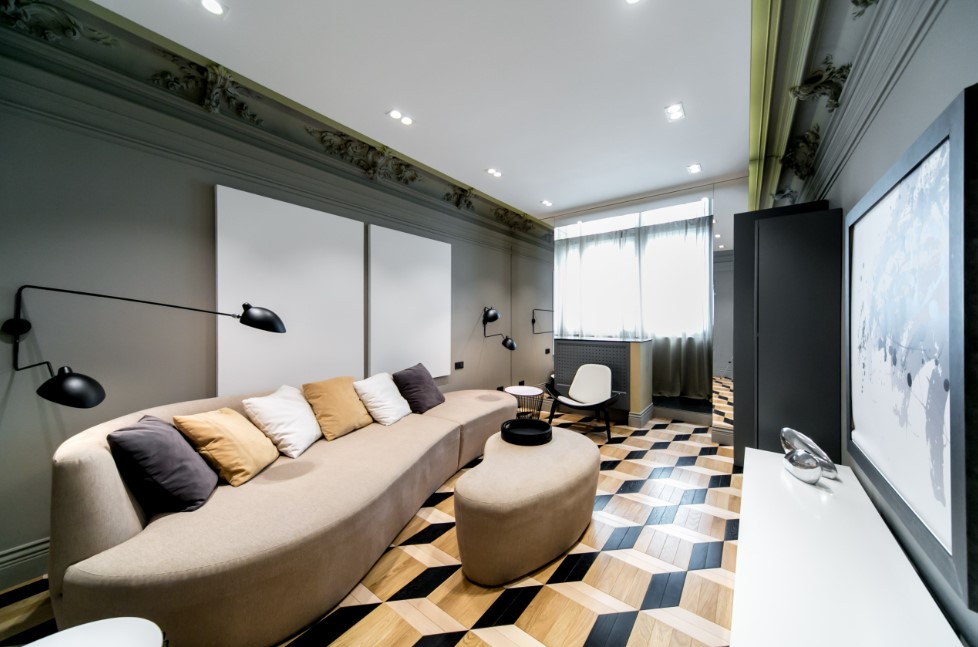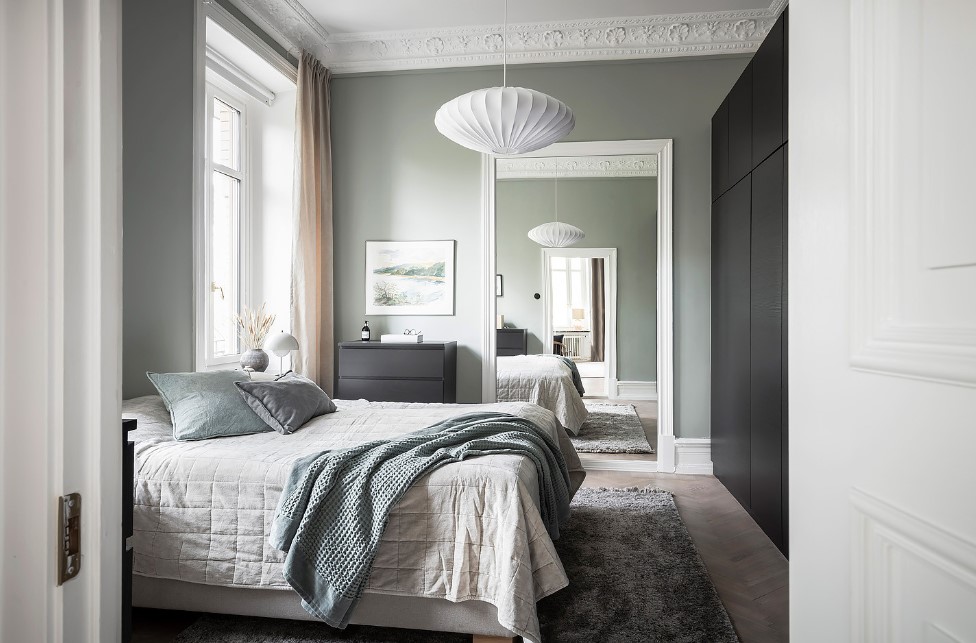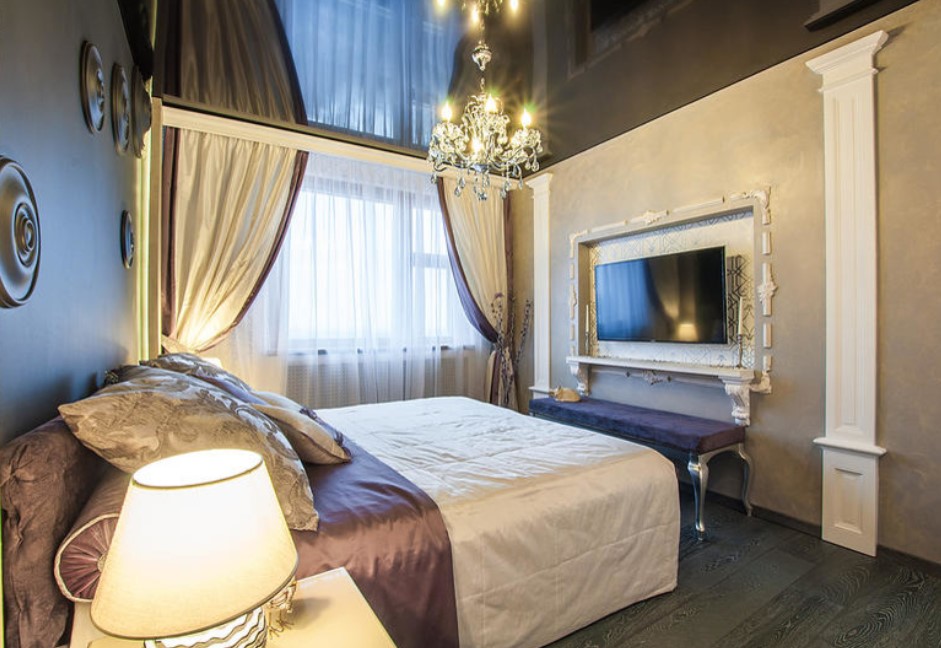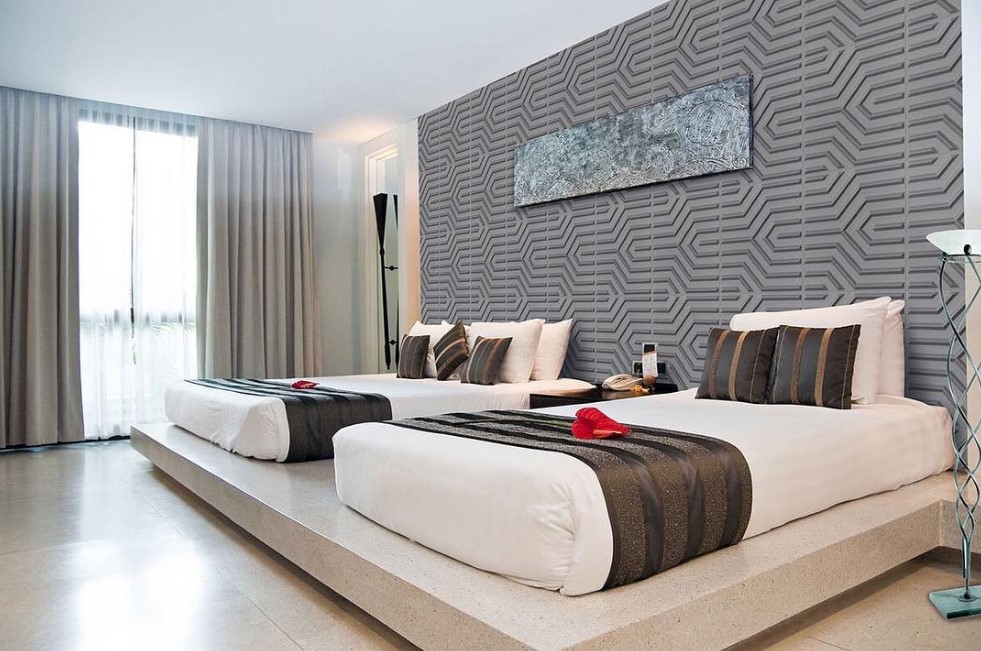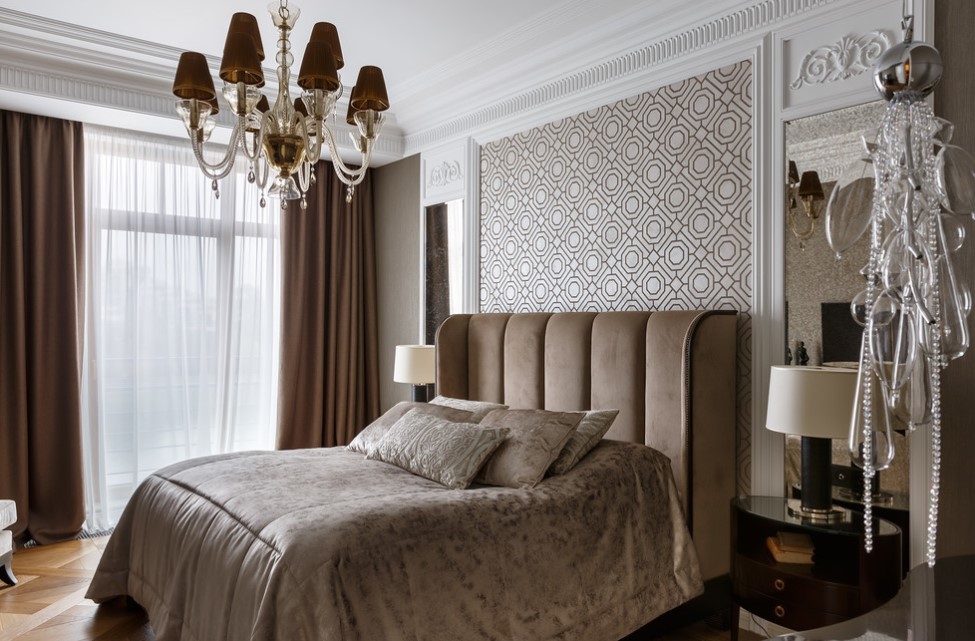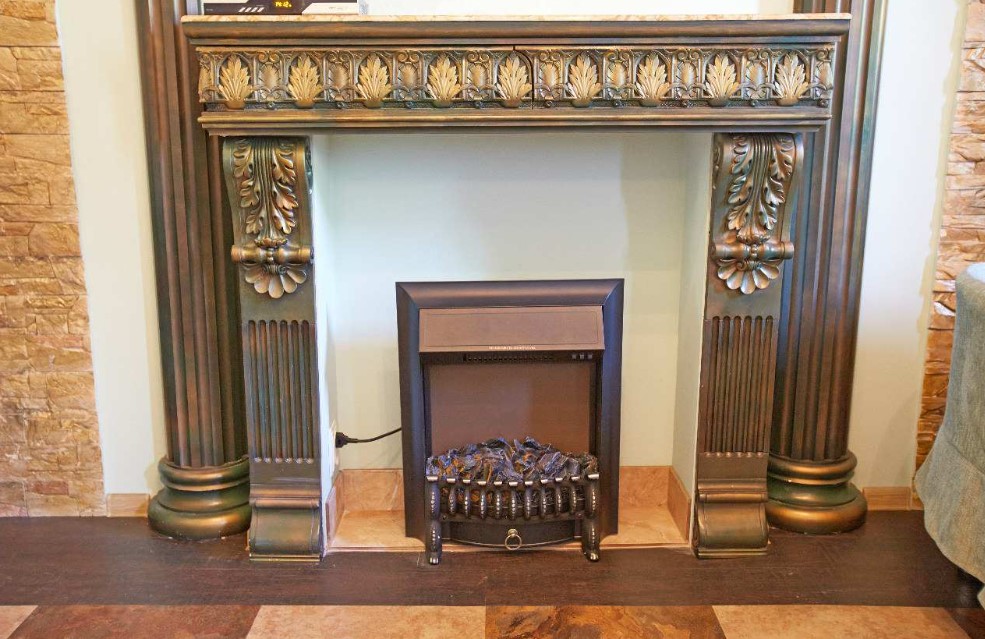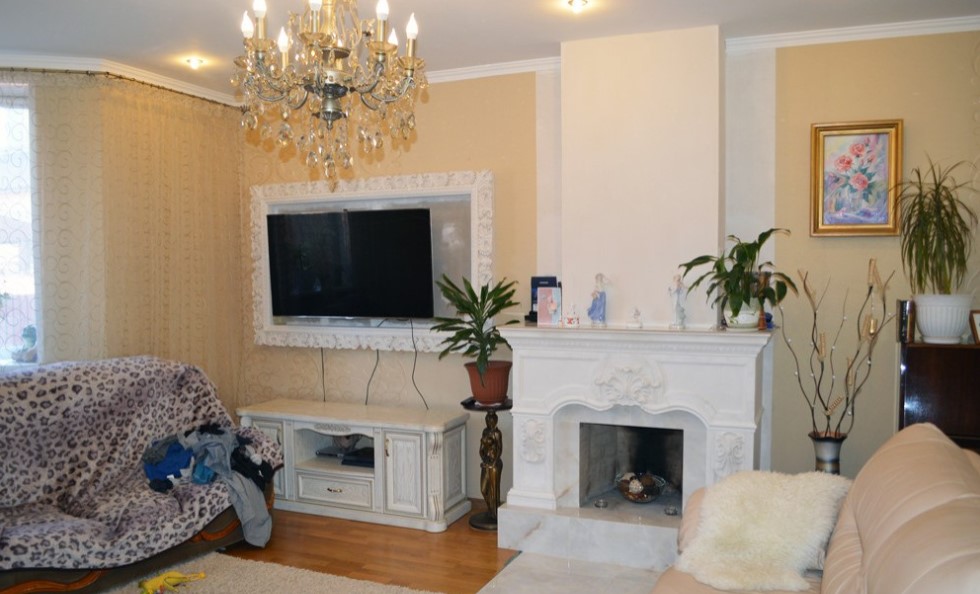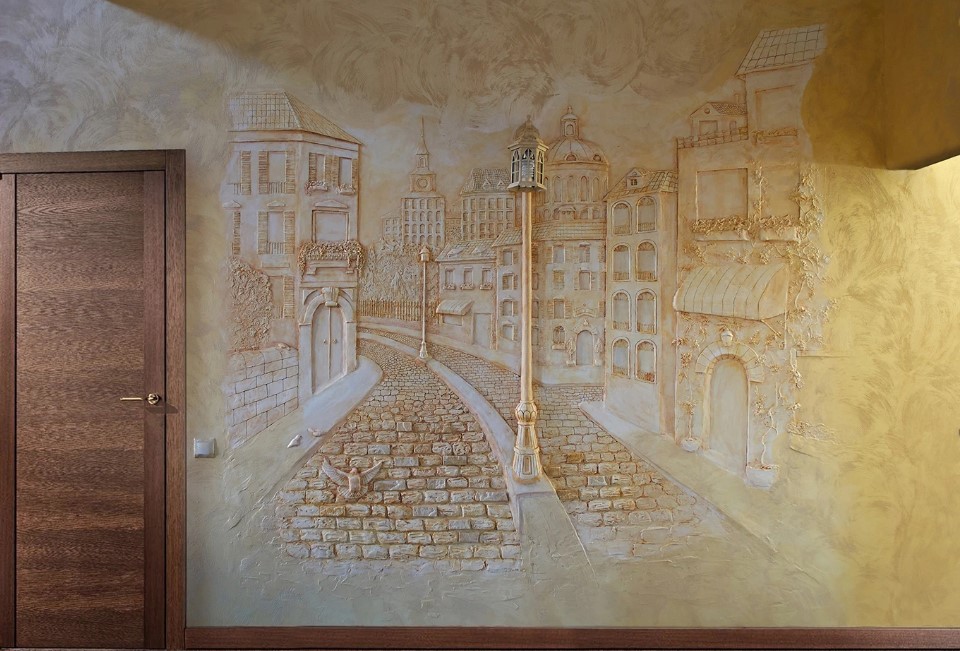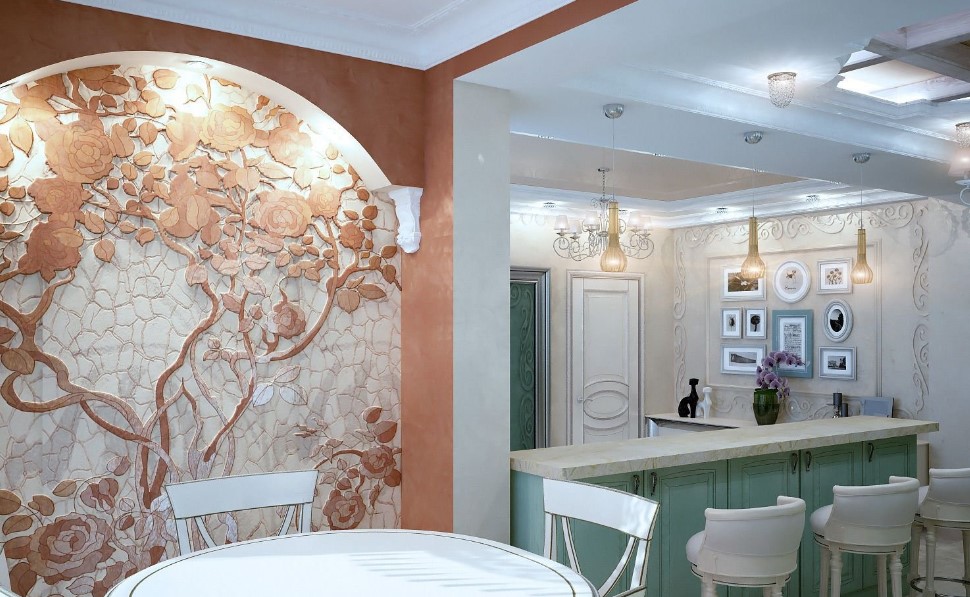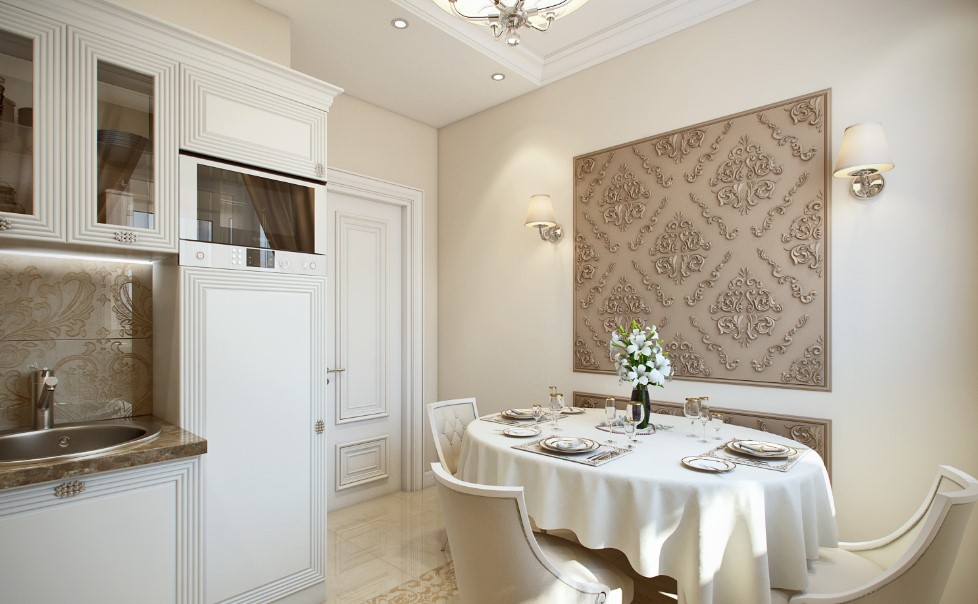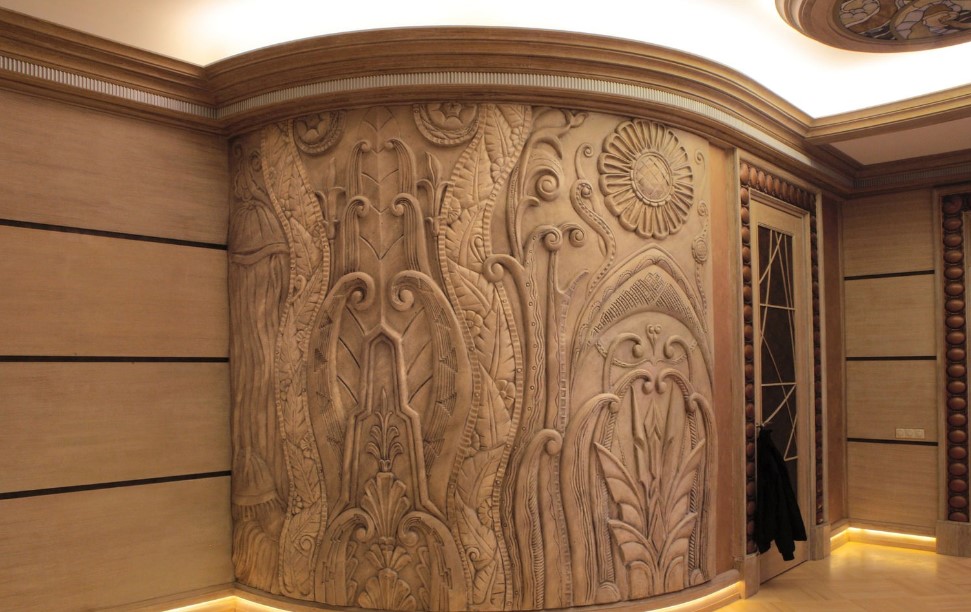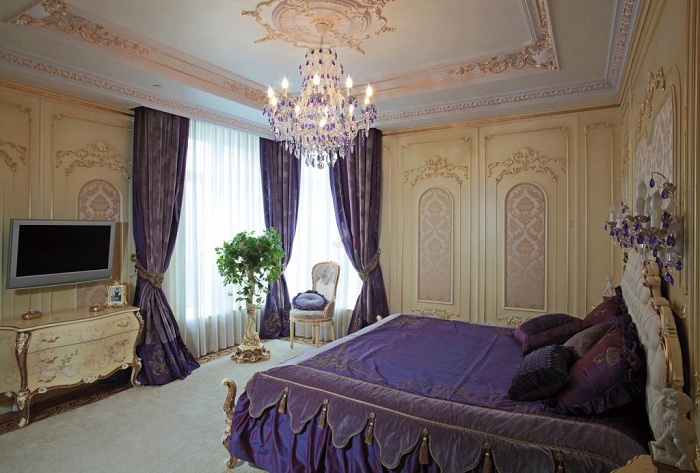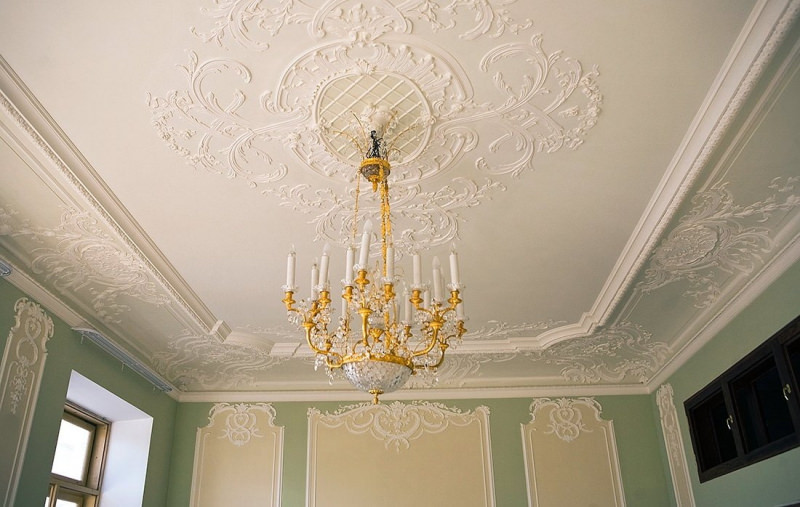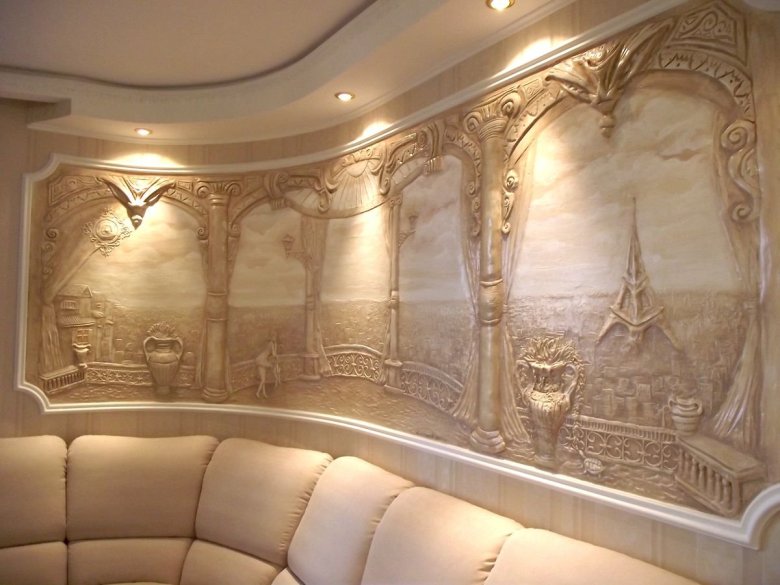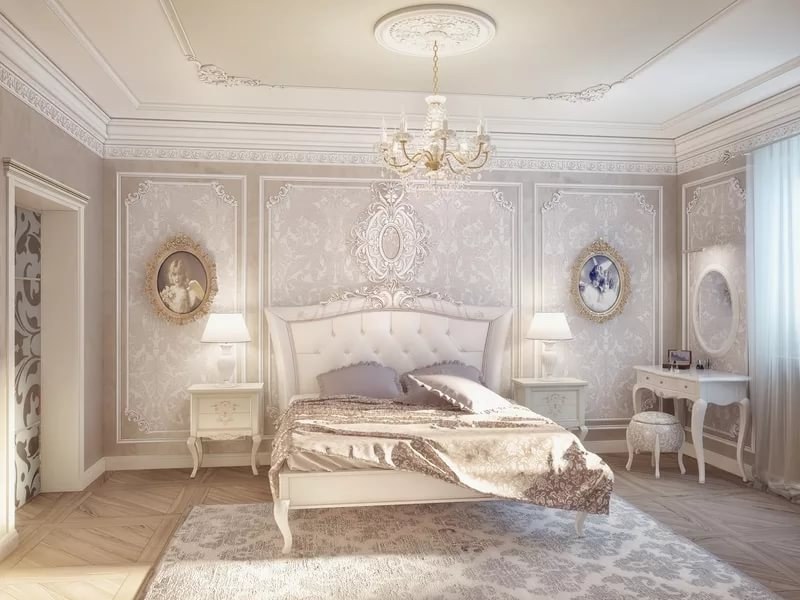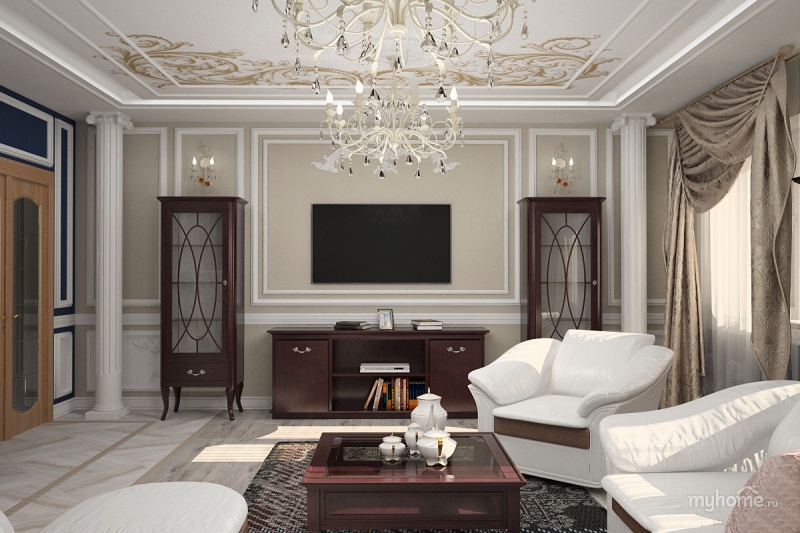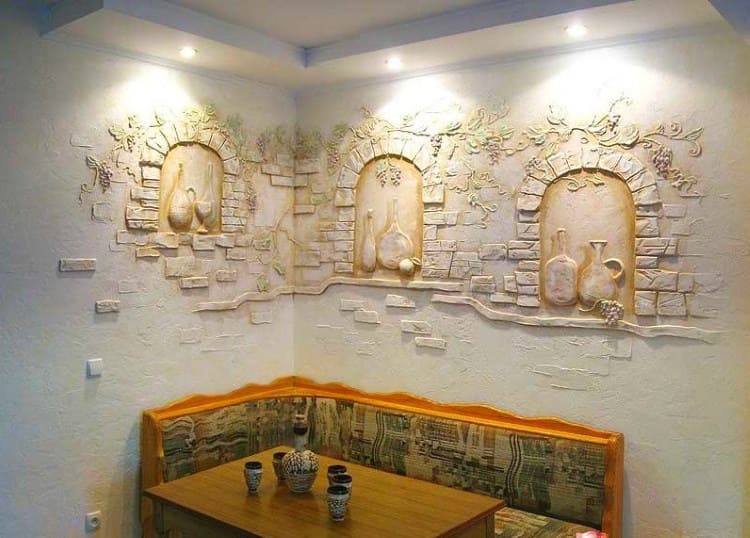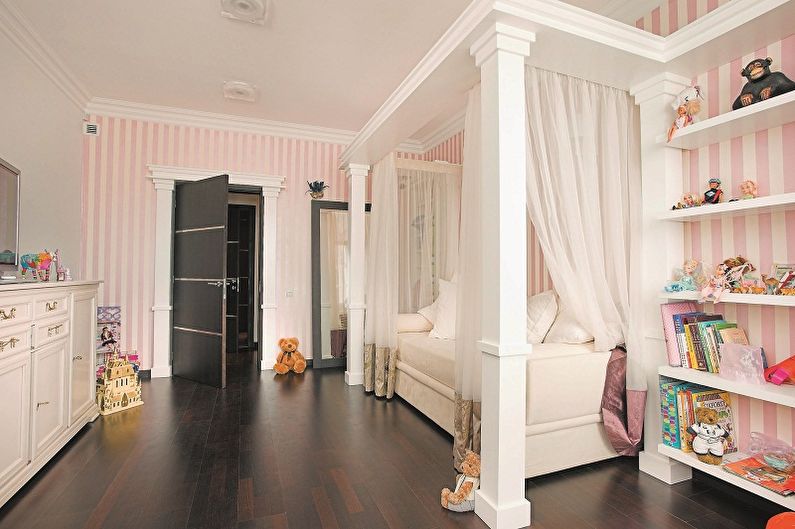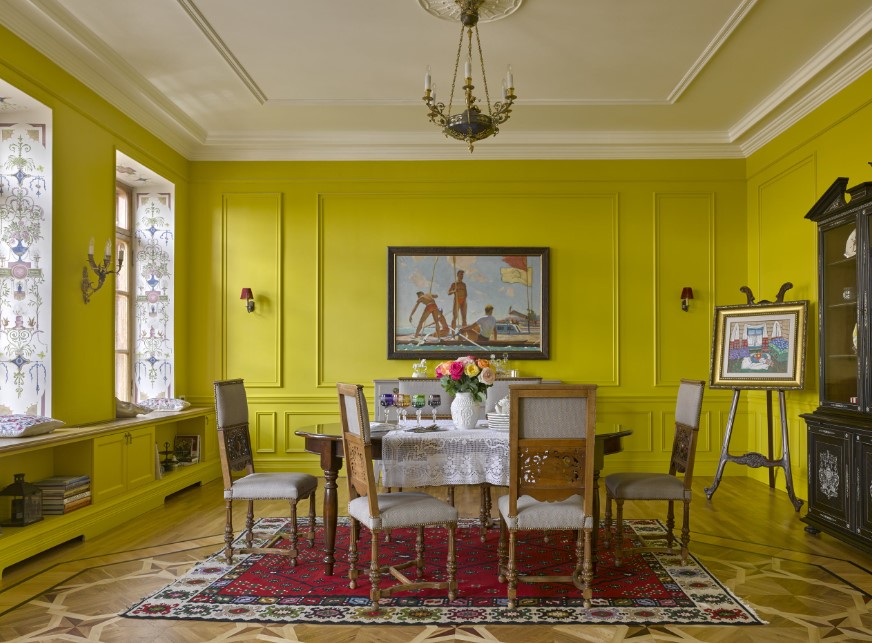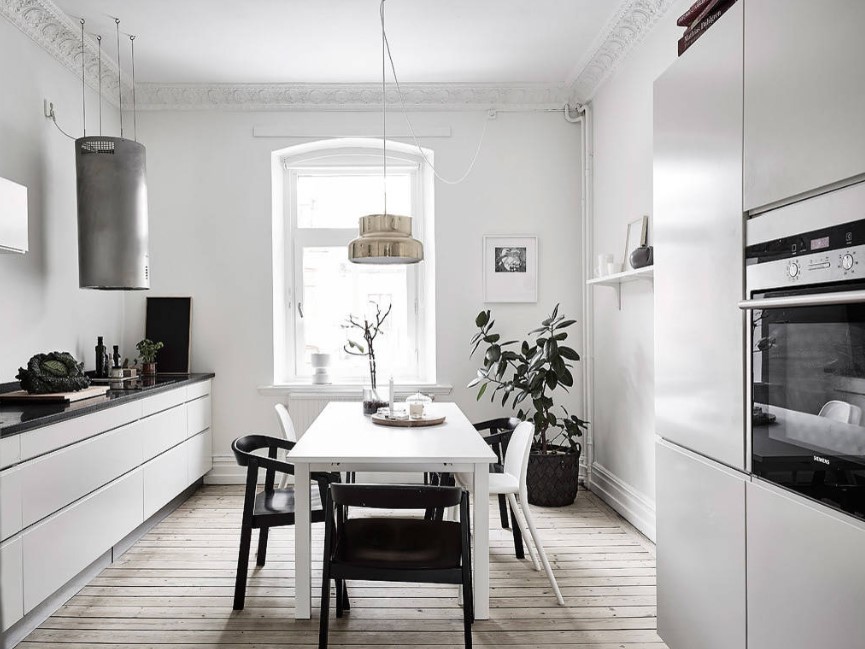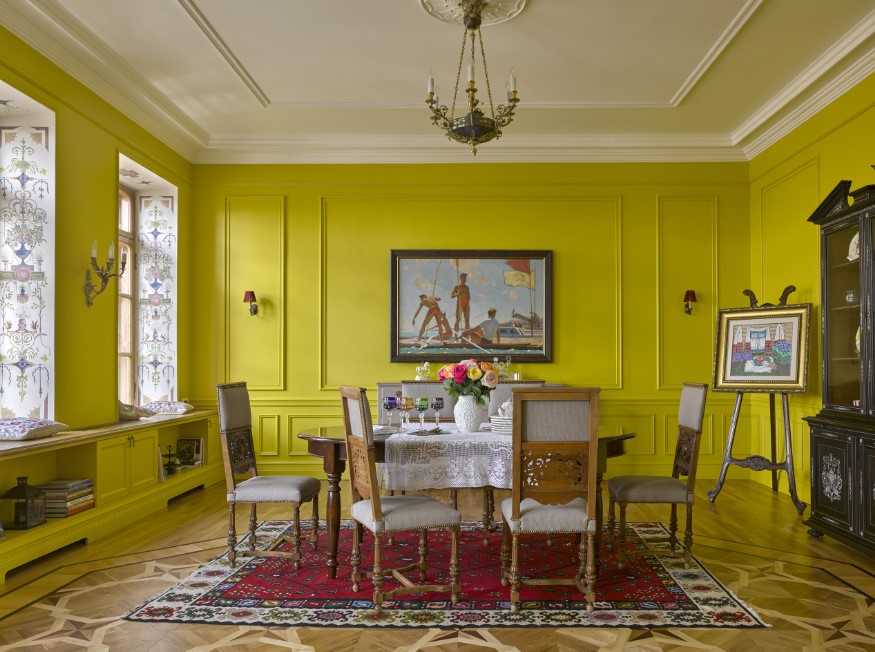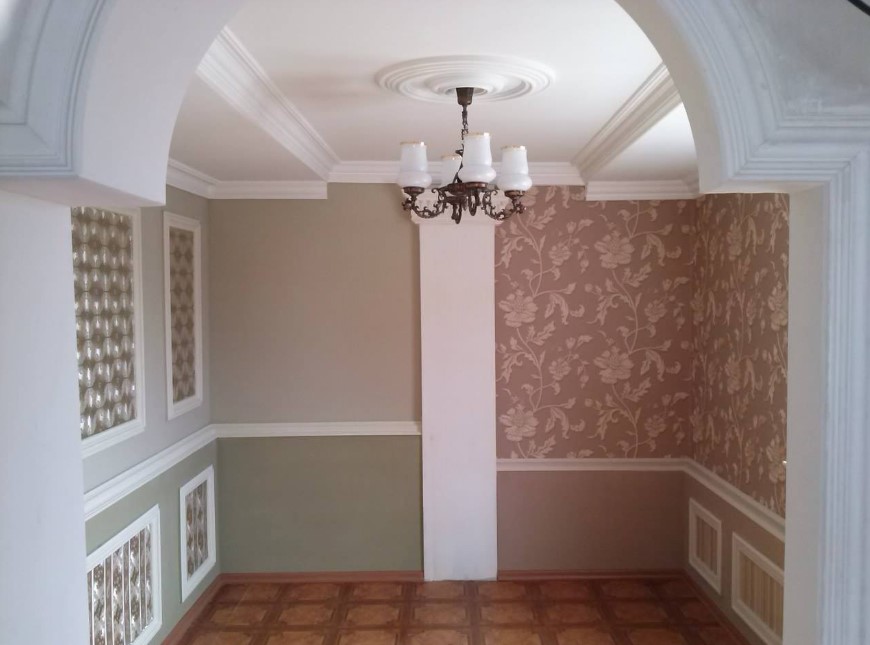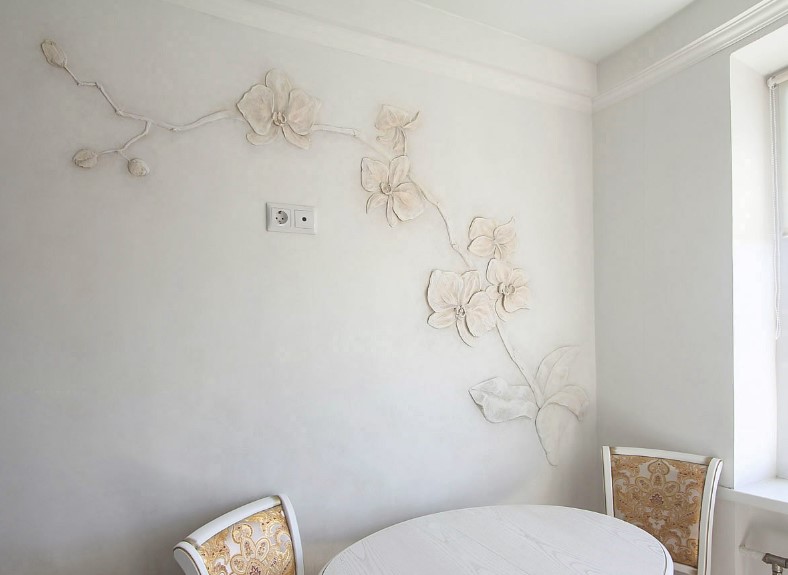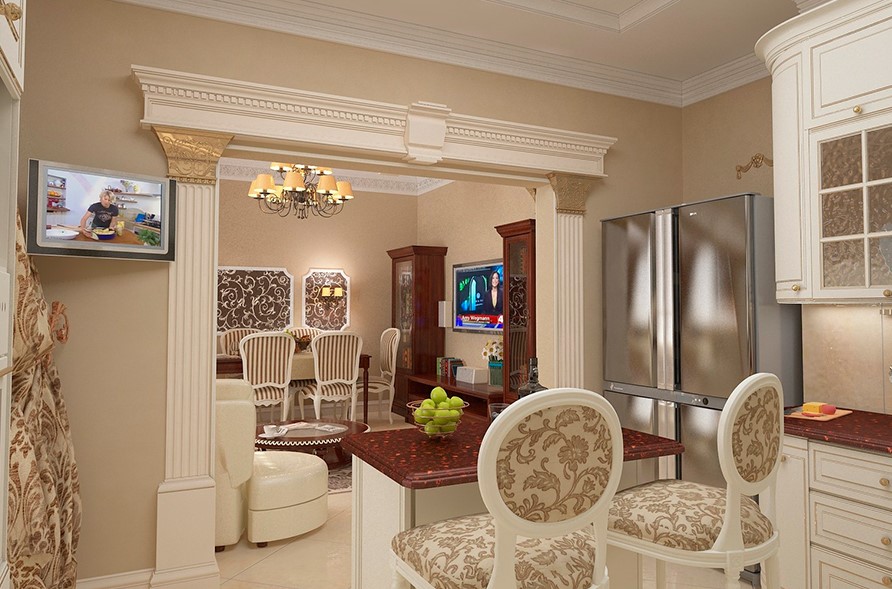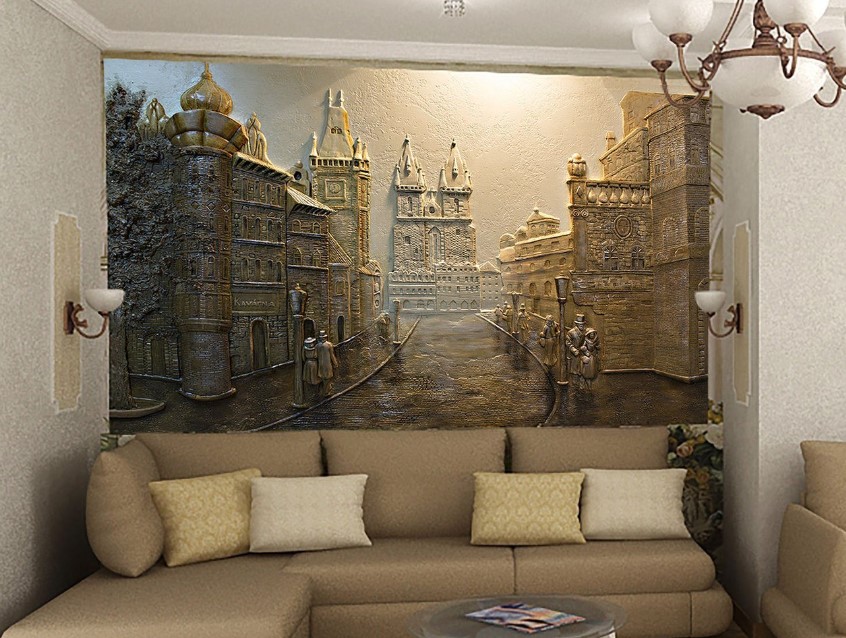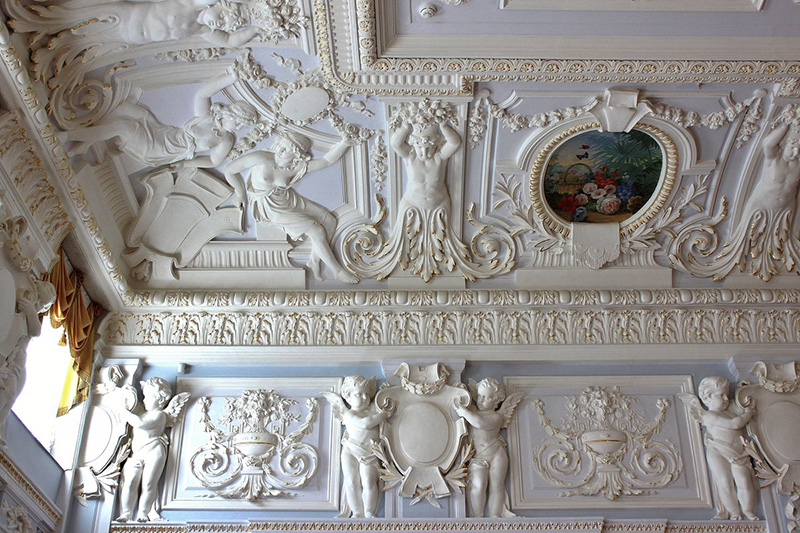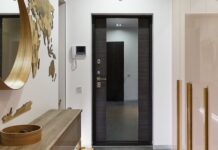Stucco molding has been used to decorate houses since the days of Ancient Greece, when this art of décor appeared. But mostly they were rich mansions and castles, made in the classical-palace style. Since then, little has changed in the functional purpose and attractive features of interior accents. Nevertheless, stucco molding, surrounded by computerized technology and modern designs such as eclecticism, has acquired a new face. It is decorated not only with large houses and cottages, but also with rather modest apartments of multi-storey buildings. The main thing is to know which stucco elements are better to use and in what style the décor is acceptable.
Types of stucco décor
Stucco molding today is a huge selection of décor according to its purpose and material. In addition, there are separate elements for walls, ceiling, window and door openings and universal parts.
Wall
Wall stucco includes:
- Rosettes are a stucco pattern most often used around electrical equipment on walls and ceilings.
- Capitals are the decoration of the upper part of a column or pilaster.
- Pilasters are a flat vertical protrusion of rectangular cross-section, different from a round column.
- Brackets are a three-dimensional décor designed to visually support the ceiling or other element above it.
- Consoles are elements similar in functionality with brackets.
Separately, it is worth highlighting the panels, which are images of plot scenes from the life of the gods, battles, festivals, compositions with the participation of people and animals, including military and household attributes.
Window and door
Openings are usually decorated with cornices, platbands and arched elements. So cornices are called horizontal décor, framing not only window or door openings, but also the facades of buildings and furniture. Most often, cornices are mounted under the ceiling.
The platband, in turn, is called a decorative profiled frame around the opening. Well, arched elements include semicircular stucco molding with decorative elements, respectively.
Ceiling
The ceiling décor should include both rosettes and decorative beams, skirting boards and corner decorations. So the beams imitate the support of the ceiling with a cross-section, the skirting boards are fixed at the junction of the ceiling and the wall. Well, corner decorations can be represented by any more or less voluminous décor in the plot or other design.
Universal
In this case, moldings and baguettes are often used for both walls and ceilings. For the former, they imply voluminous overlays on any flat surface. Most often, moldings imitate a frame or edging, as well as baguettes, better known as picture frames.
The listed stucco décor can be applied in a minimal or abundant amount, which determines each style of the interior separately.
The Cultural Revolution in Russia
Stucco décor can be used in many designs of houses and apartments. It is historically associated with some of them, others began to be supplemented with stucco molding as an experiment. One way or another, before introducing the above elements, you should get acquainted with the features of each of the likely designs and its historical past.
So in Russia, stucco appeared thanks to the innovator of Russian culture – Emperor Peter I. He built St. Petersburg, decorated with stucco everywhere. Although initially the houses were built of wood, they were stylized as stone with paints and complemented by stucco. As a result, other cities began to be decorated with decorative elements, and Peter’s innovation was adopted by subsequent state managers.
Baroque and Rococo
It was the Baroque style that became the pioneer of stucco decoration in our country. In the 17th century, the main design motifs were the myths of Ancient Greece, adapted to Christian culture:
- instead of gods and heroes, they began to depict angels and cupids;
- instead of floral patterns – flower bouquets and lilies, symbolic of the royal court of France;
- Instead of mythical animals and half-humans, there are real characters.
The ornaments are associated with the era of the Sun King, so the stucco molding is painted completely in gold or in a combination of gold and white. Rococo, in turn, became the successors of the Baroque, but in a more playful form. Monumental compositions were diluted with light openwork and asymmetry.
Male variation of the Empire style
The Empire style is called a patriarchal variation of the Baroque with the Rococo. The design is associated with Napoleon Bonaparte: supposedly it was created for the glory of his victories. Previous designs were supplemented with stucco torches, military wreaths and other elements linking art with military campaigns.
Ascetic classicism
Further, the patterned décor began to be simplified, symmetry returned to the styles in an ascetic design without curls and excessive idleness. A distinctive feature of the style was the depiction of figures and characters in pairs. In addition, classicism was replenished with bay leaves.
Art Nouveau and eclecticism
The directions are characterized by smooth lines and laconic shapes. An example of this is the smooth transition from the wall to the ceiling. Art Nouveau is one of the newest styles that originated in the early 20th century. It is characterized by total minimalism in relation to decorative elements. In addition, the design combines patterns and techniques that are incongruous at first glance.
The vast majority of prints are nautical themes, which include:
- waves;
- marine plants;
- underwater inhabitants.
Also in stucco molding there are such elements of military motifs as:
- Gun;
- Flags;
- blazonry;
- bugles.
Finally, eclecticism is attributed to the newest variations of ancient stucco. It involves a combination of different styles, but no more than three in one interior.
In addition, stucco molding can be used in art deco design with its creative approach to elegance and an abundance of crosses, as well as in the Roman style, where the more stucco, the better. One way or another, all décor elements should be combined with each other in texture and color.
You should also take into account the size of the room: the décor looks most advantageous in spacious rooms and apartments in general. In small rooms with low ceilings, stucco molding gives the impression of clutter and visually reduces the space.
















